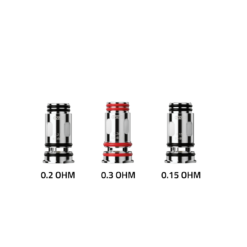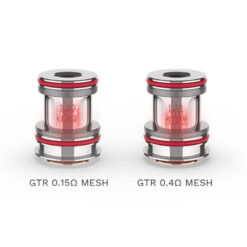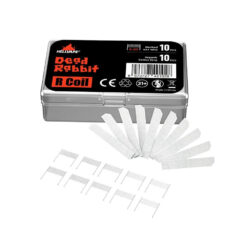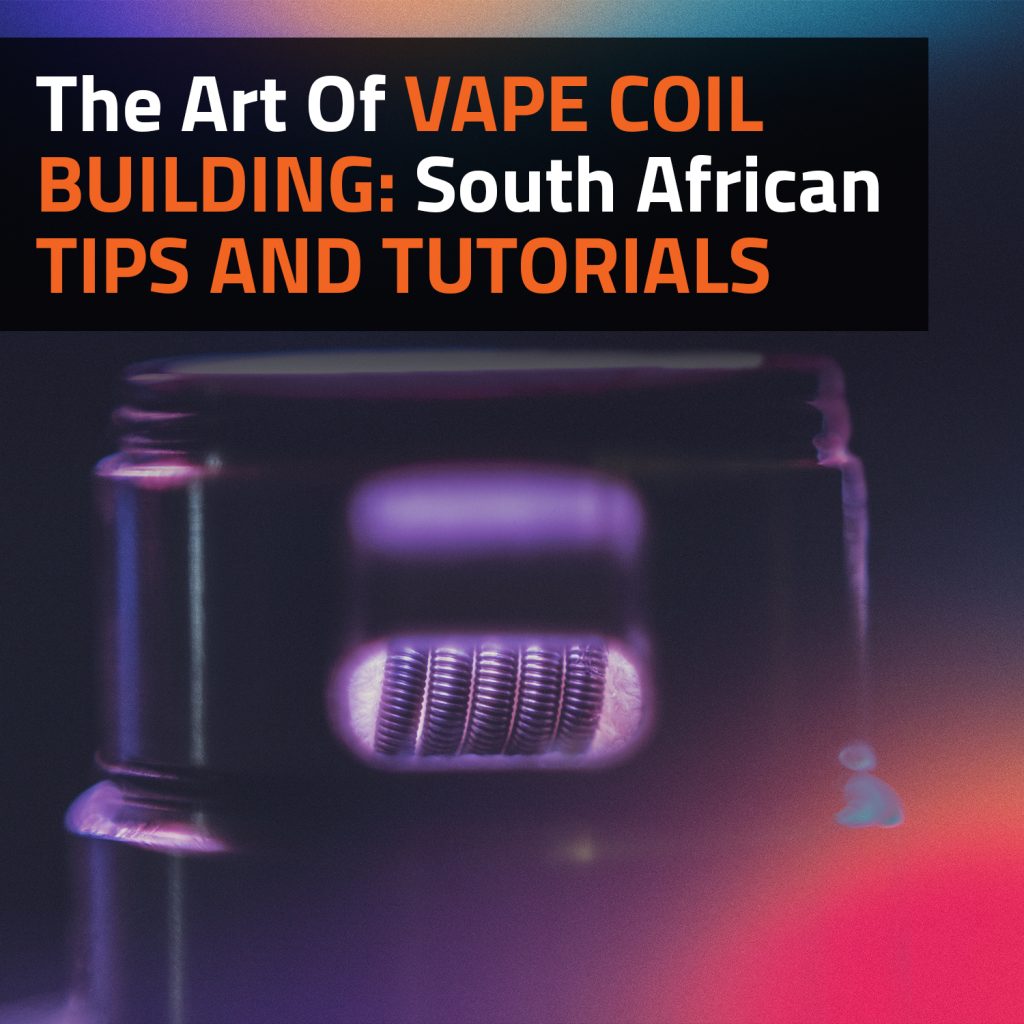Vape coil building is more than just a hobby; it’s an art form that has steadily gained popularity among vaping enthusiasts in South Africa. This intricate and creative practice allows vapers to customise their devices for an optimal and personalised experience, blending both science and artistry.
The Rise Of Vape Coil Building In South Africa
The rise of vape coil building in South Africa represents a compelling chapter in the broader narrative of vaping culture. In recent years, the country has seen a remarkable surge in interest and participation in this specialised aspect of vaping. Several factors have contributed to this phenomenon:
- Customisation and personalisation: Vaping enthusiasts are constantly seeking ways to enhance their vaping experience. By building their coils, vapers can fine-tune the performance of their devices to match their specific preferences. This level of customisation allows them to control factors like flavour, vapour production, and throat hit.
- Cost-efficiency: Vaping can be an expensive habit, especially when it comes to purchasing pre-made coils. Vape coil building offers a cost-effective alternative, as it allows users to create their coils from readily available materials.
- Sense of community: The South African vape coil building community has fostered a strong sense of camaraderie. Enthusiasts often gather at local vape shops, online forums, and social media platforms to share their knowledge, exchange tips, and showcase their creations. This sense of community has created a supportive and collaborative environment for vapers to learn and grow.
- Artistic expression: Coil building is more than just a technical skill; it’s a form of artistry. South African vapers have embraced the creative aspect of coil building, experimenting with intricate designs and styles. This artistic dimension appeals to individuals looking for a creative outlet within the world of vaping.
- Availability of resources: With the increasing demand for coil building, there is now a broader availability of resources, including tutorials, workshops, and specialised tools, which makes it more accessible to newcomers and experienced vapers alike.
Essential Tools and Materials
Essential tools and materials are the foundation of successful vape coil building in South Africa, and understanding what you need is crucial for both beginners and experienced coil builders. Here’s a detailed breakdown of the key components.
Tools
- Wire cutters: Wire cutters are essential for trimming your coil wire to the desired length. Precision is crucial, so invest in a good pair of cutters for clean and accurate cuts.
- Needle-nose pliers: These pliers are handy for holding and shaping wire. They give you more control when crafting your coils, especially when dealing with small or intricate designs.
- Coil jig: A coil jig is a specialised tool with various diameter rods that help you create consistent and uniform coil wraps. It’s particularly useful for beginners to ensure even coils.
- Ceramic tweezers: Ceramic tweezers are heat-resistant and non-conductive. They allow you to adjust the coils while firing, ensuring they heat evenly and eliminating hot spots.
- Screwdrivers: A set of precision screwdrivers is useful for wrapping coils around different diameters, depending on the desired coil type and resistance.
- Ohm-metre: An ohm-metre is crucial for safety. It helps you measure the resistance of your coils before attaching them to your mod, ensuring they are within safe limits.
Materials
- Resistance wire: South African vapers have various options when it comes to resistance wire. Common choices include Kanthal, Nichrome, and stainless steel. Each wire type offers different characteristics and is suitable for specific vaping styles.
- Cotton wick: Organic cotton wicking material is widely used for its ability to hold e-liquid and deliver flavour. South African vapers may opt for local cotton brands or imported options.
- E-liquid: Your choice of e-liquid will impact the flavour and vapour production of your coils. South African vapers often have access to a wide range of local and international e-liquid brands, allowing for diverse flavour experimentation.
- Tools for measuring and cutting wire: These include a ruler or measuring tape to cut wire to the desired length accurately.
- Tweezers: In addition to ceramic tweezers, regular tweezers can be helpful for fine-tuning your coils.
- Screwdriver kit: A set of screwdrivers with various diameters allows for versatile coil building.
- Wire and wick storage: Keeping your wire and wick organised in containers or spools will help prevent tangling and make them easily accessible.
Safety Precautions For Coil Building
Safety is paramount in the world of vape coil building, and South African enthusiasts, like vapers around the world, prioritise it to ensure a risk-free and enjoyable experience. Here are some safety precautions for coil building:
- Ohm’s law: Calculate the resistance of your coils and ensure they fall within the safe range for your specific battery and device. Knowing the relationship between voltage, current, and resistance will help you build coils that are compatible with your setup.
- Battery safety: Always use high-quality, authentic batteries from reputable manufacturers. Ensure that your batteries are in good condition, with no visible damage or tears on the battery wraps. Vapers should also store their batteries safely, avoiding contact with metal objects and extreme temperatures.
- Safety gear: Consider wearing safety goggles and gloves when working with wire and tools to protect your eyes and hands. Safety gear is especially important when clipping wire ends, as small wire fragments can be sharp and may fly off during cutting.
- Coil resistance checks: Always use an ohm-metre to check the resistance of your coils before attaching them to your mod. If the resistance is too low or too high, it can strain your battery and pose a safety risk.
- Careful handling of hot coils: When dry firing or adjusting your coils, use ceramic tweezers and be cautious when they are hot. Avoid contact with metal to prevent short circuits.
- Battery removal: Remove the batteries from your mod when building or adjusting coils. This prevents accidental firing during the building process.
Choosing The Right Wire And Resistance
Choosing the right wire and resistance is a critical aspect of vape coil building as it directly influences the performance, flavour, and overall vaping experience. The decision hinges on a combination of personal preferences, the type of device, and the desired outcome.
Wire Types
South African coil builders typically have several options when it comes to wire types, each with its unique characteristics.
- Kanthal: Kanthal is a popular choice due to its versatility. It offers good resistance to heat, making it suitable for a wide range of coil builds. Kanthal wire is known for its ease of use, making it an excellent option for beginners.
- Nichrome: Nichrome wire heats up quickly and can provide a rapid response time. This can result in a more immediate vapour production, which some vapers prefer. Nichrome is also known for its clean flavour profile.
- Stainless Steel (SS): Stainless steel wire is favoured for its temperature control (TC) capabilities, making it an excellent choice for vapers who wish to fine-tune their vaping experience. It’s also known for its durability and resistance to rust.
Resistance And Gauge
The resistance of your coil is determined by the length and thickness (gauge) of the wire. South African coil builders have the flexibility to choose from various wire gauges, typically measured in AWG (American Wire Gauge).
- Lower Gauge (thicker wire): Thicker wire has less resistance and can handle higher wattages, resulting in more vapour production. Lower gauge wire is often used for sub-ohm vaping and cloud-chasing.
- Higher Gauge (thinner wire): Thinner wire has more resistance and requires lower wattages. This is suitable for mouth-to-lung (MTL) vaping, which focuses on flavour and a more restricted draw.
Balancing Resistance And Wattage
When choosing wire and resistance, it’s crucial to consider the wattage your device can handle. Exceeding the wattage limits can lead to overheating and potential safety issues. South African vapers often use online calculators to determine the number of wraps needed to achieve their desired resistance, taking into account the wire type and gauge.
Experimentation And Personalisation
Coil builders often embrace experimentation. Vapers may try different wire types, gauges, and resistances to find the perfect balance that suits their individual taste. This aspect of personalisation is what makes coil building an art as well as a science.
Step-By-Step Coil Building Tutorial
Creating coils through a step-by-step process is a fundamental skill for South African vape enthusiasts and coil builders worldwide. Here’s a comprehensive guide to help you understand the coil building process and embark on your journey:
- Step 1: Gather Your Tools and Materials
Before you begin, ensure you have all the necessary tools and materials, including wire, cotton wick, coil jig, screwdrivers, wire cutters, ceramic tweezers, and an ohm-metre.
- Step 2: Plan Your Coil
Decide on the type of coil you want to build, considering factors such as wire type, gauge, resistance, and the number of wraps. This decision will affect your vaping experience.
- Step 3: Prepare the Wire
Cut a length of wire using wire cutters. The length depends on your planned coil configuration. If you’re new to coil building, it’s a good idea to cut a slightly longer piece to account for any mistakes.
- Step 4: Use the Coil Jig
Insert one end of the wire into the coil jig and wrap it around the rod to create the coil. The diameter of the rod will determine the coil’s inner diameter. Ensure the wraps are close together for even heating.
- Step 5: Install the Coil
Remove the coil from the coil jig and insert it into the posts of your rebuildable atomizer or deck. Make sure it’s centred, and the leads are secured in place.
- Step 6: Check the Resistance
Using an ohm-metre, measure the resistance of your coil. Ensure it falls within the safe range for your device. If it doesn’t, you may need to adjust your coil configuration.
- Step 7: Tighten the Screws
Secure the coil in place by tightening the post screws. Ensure the coil is stable and doesn’t move around.
- Step 8: Trim Excess Wire
Trim any excess wire leads, ensuring they don’t touch other parts of the atomizer to avoid short circuits.
- Step 9: Pulse and Adjust the Coil
With the coil installed, pulse the firing button on your mod at low wattage. This helps identify hot spots or areas where the coil doesn’t heat evenly. Use ceramic tweezers to pinch and strum the coil gently to eliminate hot spots.
- Step 10: Wicking
Thread a piece of cotton wick through the centre of the coil. Cut the wick to the appropriate length, leaving enough to tuck it into the wicking channels. Be careful not to overstuff the wick, as it can lead to dry hits.
- Step 11: Prime the Wick
Apply a few drops of e-liquid to saturate the wick and coils. This primes the coil and prevents a dry burn when you first fire it.
- Step 12: Test and Adjust
Reassemble your atomizer, attach it to your mod, and test-fire the coil at your preferred wattage. Make adjustments to the wattage and airflow until you achieve your desired vaping experience.
- Step 13: Vape and Enjoy
Once you’re satisfied with your coil’s performance and flavour, you’re ready to enjoy your customised vaping experience!
Troubleshooting Common Coil Building Issues
Troubleshooting is an essential skill for South African vape coil builders and coil enthusiasts worldwide. While coil building offers great customisation and control, it can also present challenges. Here are common coil building issues and how to troubleshoot them.
Hot Spots
Issue: Hot spots are areas of the coil that heat unevenly, leading to a harsh, burnt taste.
Solution: Strum the coil with ceramic tweezers or gently pulse the coil while pinching it to eliminate hot spots. Ensure the coil is evenly spaced and tight.
Low Resistance
Issue: Your coil’s resistance is lower than desired or below the safe limit for your device.
Solution: Check your coil’s wraps, spacing, and the diameter of the wraps. Adjust the number of wraps or wire gauge to increase resistance.
High Resistance
Issue: The coil’s resistance is higher than desired, resulting in weak vapour production.
Solution: Verify the number of wraps and wire type. Reduce the number of wraps or use a thicker wire to decrease resistance.
Uneven Heating
Issue: Your coil heats unevenly, causing one side to glow brighter or hotter.
Solution: Gently strum the coil and make micro-adjustments to ensure it heats evenly. Ensure the coil is centred and well-secured.
Leaking Or Flooding
Issue: E-liquid leaks from the atomizer or floods the coil.
Solution: Check your wicking. Ensure it’s not too loose or too tight and that it blocks the coil’s centre. Adjust your wicking material and technique.
Dry Hits
Issue: You experience dry hits, which are harsh and unpleasant due to inadequate wicking.
Solution: Make sure your wick is adequately saturated and not blocking the coil. Adjust the wick’s length and density to improve e-liquid flow.
Spitback
Issue: E-liquid pops and spits into your mouth when vaping.
Solution: Reduce the power or wattage, or adjust the airflow to prevent excessive e-liquid buildup on the coil. Make sure your wicking is not oversaturated.
Coil Gunk
Issue: Your coils accumulate gunk and residue, affecting flavour and longevity.
Solution: Vape at lower temperatures or wattages to reduce residue buildup. Regularly clean and dry burn your coils to prolong their lifespan.
Low Vapour Production
Issue: Your coil produces less vapour than expected.
Solution: Check the coil’s resistance, wattage, and airflow settings. Adjust them to increase vapour production. You can also experiment with different coil types and configurations.
Mod/Battery Issues
Issue: If you encounter problems like misfires or inconsistent performance, it might be a mod or battery issue.
Solution: Inspect your battery for damage, and ensure it’s charged and inserted correctly. Clean the mod’s connections and update firmware if applicable.
Coil Building Tools
Issue: Using low-quality tools can lead to difficulties in coil building.
Solution: Invest in high-quality tools and ensure they are well-maintained. This includes wire cutters, coil jigs, and ceramic tweezers.
Whether you’re a novice or a seasoned coil builder, this article provides insights to start or improve your coil-building journey. By embracing this art, South African and global vapers continue to push boundaries, allowing for creativity and personalisation in the world of vaping. So, grab your tools, choose your wire, and embark on a journey that promises not only an exceptional vaping experience but also an expression of your style and taste. Coil building is an art worth exploring, with South Africa playing a dynamic role in this ever-evolving vaping landscape.
-
Voopoo PnP X Coil
R65.00 -
Hellvape Wireice Launcher Tank Meshed Coil
R65.00Original price was: R65.00.R35.00Current price is: R35.00. -
Vaporesso GTR Coil
R65.00 -
Hellvape Dead Rabbit R 10pc 0.2 ohm Coil Pack
R80.00










